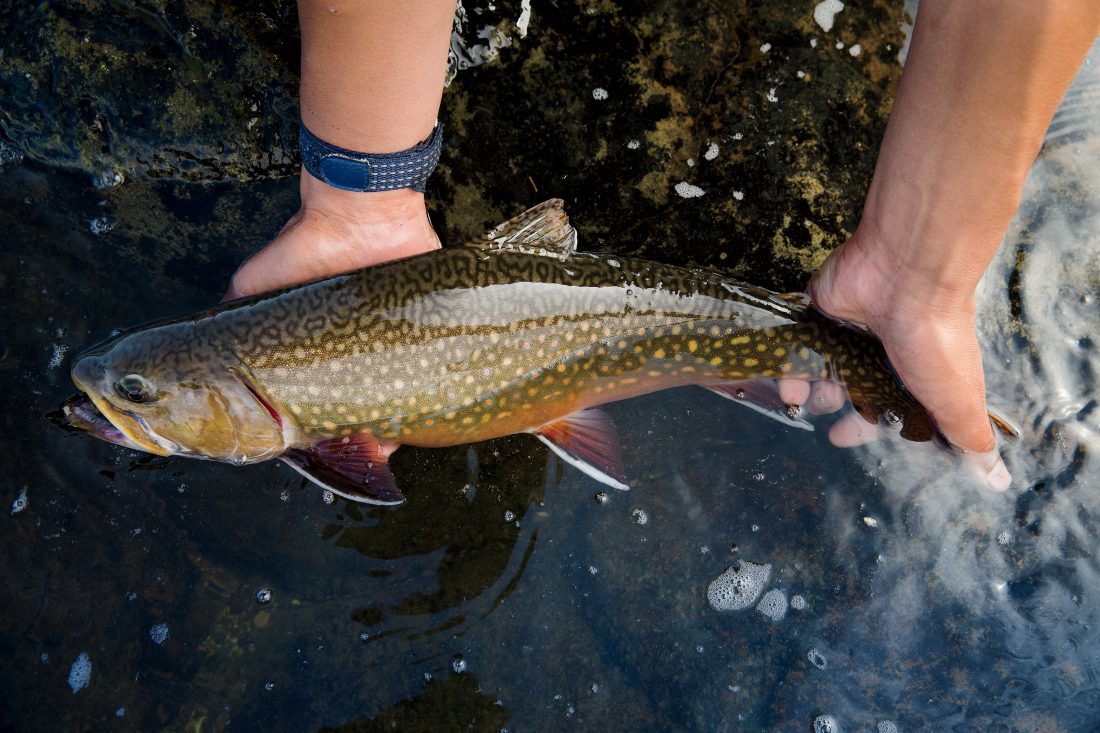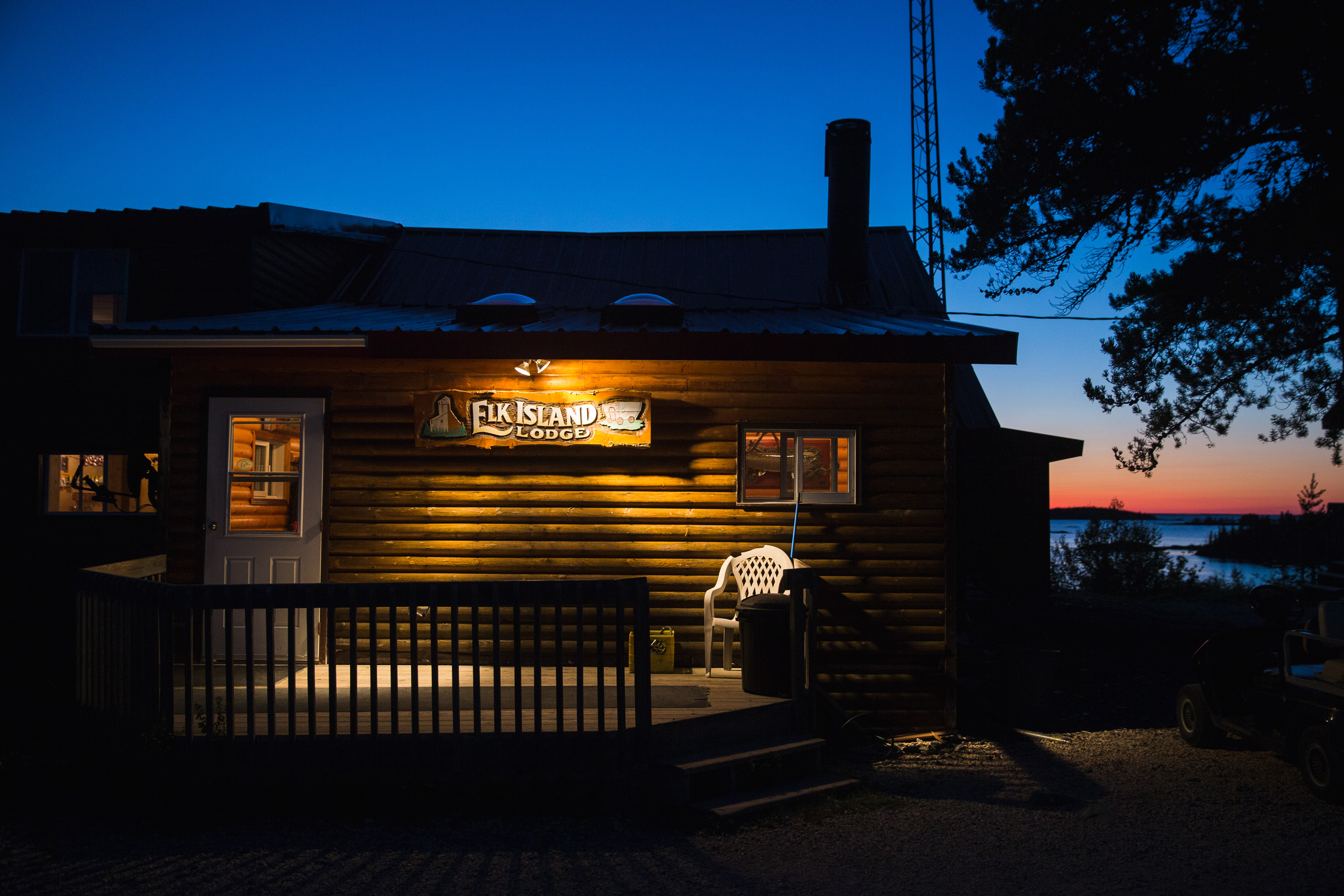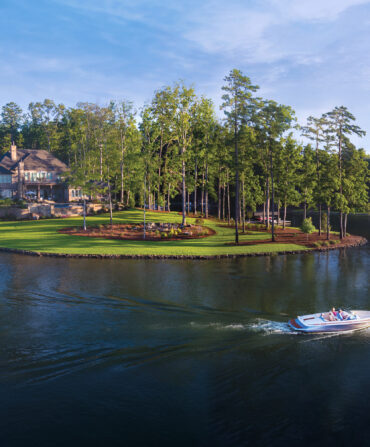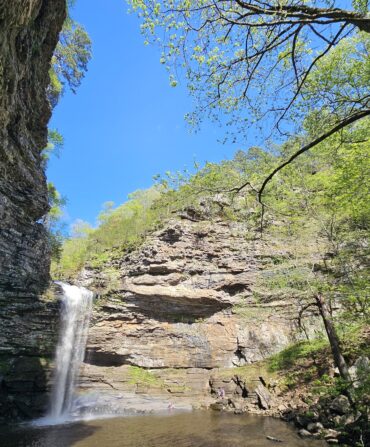As the ancient de Havilland Beavor roared a thousand feet over Canada’s boreal forest, I couldn’t help but fidget. It wasn’t that the little floatplane I was crammed into was built shortly after World War II, or that we were fifty-five miles by air from the nearest aid, should things go awry. What had me so nervous was the river we were about to fish—God’s River, one of the most hallowed brook trout streams on earth.
 I was among a small party of serious trout anglers, each with decades of experience casting flies in all kinds of water. They were downright giddy. Some had been awaiting this chance for years. After all, fishing God’s River isn’t easy. It’s in northeastern Manitoba, about halfway between Lake Winnipeg and Hudson Bay. You can’t drive there. But Elk Island Lodge, where we were staying, has its own airstrip. Elk Island is on God’s Lake, a wonderland of pike and lake trout fishing. From there, it’s a short floatplane trip or a daylong boat ride to reach the river. As for me, I was anything but giddy. I am an ocean fisherman by nature, more accustomed to tuna than trout, and it occurred to me that I’d have an easier time flying the Beaver than I would casting a nymph or a Woolly Bugger. I felt like I’d crashed someone else’s church service just to drink the wine. As if my mere presence in this place were a sacrilege. The fact that it was raining didn’t help. I cast a glance at the sky, hoping to avoid a bolt of judgment.
I was among a small party of serious trout anglers, each with decades of experience casting flies in all kinds of water. They were downright giddy. Some had been awaiting this chance for years. After all, fishing God’s River isn’t easy. It’s in northeastern Manitoba, about halfway between Lake Winnipeg and Hudson Bay. You can’t drive there. But Elk Island Lodge, where we were staying, has its own airstrip. Elk Island is on God’s Lake, a wonderland of pike and lake trout fishing. From there, it’s a short floatplane trip or a daylong boat ride to reach the river. As for me, I was anything but giddy. I am an ocean fisherman by nature, more accustomed to tuna than trout, and it occurred to me that I’d have an easier time flying the Beaver than I would casting a nymph or a Woolly Bugger. I felt like I’d crashed someone else’s church service just to drink the wine. As if my mere presence in this place were a sacrilege. The fact that it was raining didn’t help. I cast a glance at the sky, hoping to avoid a bolt of judgment.
Do any reading about brook trout and you’ll see words like dainty or cute or even coquettish. That’s because the East’s native trout has been pushed into secret places by pollution, habitat loss, and invaders such as rainbow and brown trout. While catching one of these beautiful fish is still a great reason to go bushwhacking to a quiet Appalachian stream, Southern brookies usually aren’t much bigger than your hand. This was another country, another world.

Photo: Rob Howard
A floatplane ferries anglers.
Here, near the top of their native range, the minimal fishing pressure and strict catch-and-release rules allow brookies to grow as large as salmon, and with that size develop a ferocity normally reserved for oceanic species. To meet this challenge, I’d brought my trusty spinning rod and reel. I wasn’t about to squander this opportunity by flailing away with a fly rod I barely knew how to use. Pretty it wasn’t, but I was determined to catch one of these fish.
Fortunately, one of the group was equally inept at fly fishing, so we paired up and let the fly guys do their thing in another skiff. Not having to contend with a fly rod eased my mind, and as Jeff Andrews, our guide, pointed the boat upstream, I let the taiga flow through me. A fire had wiped away the jack pines, black spruce, and birches of this stretch of forest some thirty years prior, but the spires of these skeletal trees still stood above the wall of new growth like the spears of ancient infantry. Boulders broke the flow of the river across its width, brought here by glaciers that scoured scars into the Canadian Shield, some of the oldest rock on earth.
The lodge itself offers a different view of this wild country. Run by proprietors Greg and Lindsie Dick, it’s classic North Woods, perched on a hillside above the deep blue of God’s Lake. Our group shared a cabin spacious enough to house a large family, and the great hall, where we all gathered for dinner and drinks each night, could seat forty and still leave space for billiards and even a little pro shop. It’s a far-flung outpost, but we were by no means roughing it.
Andrews has fished this area his whole life; like all the guides at Elk Island, he is Cree, from the nearby God’s Lake First Nation. We’d been fishing with him the previous two days, having a blast catching lake trout and northern pike and feasting on the traditional shore lunches he and his fellow Cree guides served us on the banks. I can’t think of a much better meal than fish you’ve just caught, filleted and fried to perfection, served with potatoes, onions, and corn.

Andrews had been amiable enough, if a bit taciturn. I assumed he’d just been sizing us up. Now, as we headed up God’s River in search of giant brookies, he decided it was time to apologize for his silence: His wife had died in an accident just a month before, leaving him a single father. It was clear he was just trying to power through the fishing season. Time enough for grief later. Manitoba winters are hard, and money is short.
He explained that even here in this untouched river, the brook trout had been chased into the rapids by the walleyes and gigantic pike that patrolled the slower waters. As if to punctuate the point, my companion, who’d shown a preternatural knack for catching pike all week, caught a 33-incher when she tossed her lure into the slower waters below some rapids. To catch the brookies, we’d cast into the top of the rapids and work the lures through slack spots behind boulders or around cut banks. The fly guys would do the same with their gear.
Maybe it was the weather, low pressure and all that, but at first we cast and cast, to no avail. Then the sky cleared. Maybe it was the lure. I changed from a firetiger-colored Rapala to a silvery blue, barbs crimped down (barbless hooks only in Manitoba). First cast: Bang! Fish on! I reeled it in grinning, but as the fish came closer, my heart sank. Walleye. Nothing to do but keep trying.
Hours passed. In the turbulence and rocks, snags were frequent. I cast into a slack spot, reeled…snagged. Except this snag jerked its head…hard. The fish began stripping line. I’d set the drag loose because I didn’t want to horse these fish in—this was a catch-and-release river, and it was imperative to treat these trout as gingerly as possible. Andrews silently reached for the net as I finally brought the fish near the boat. A brookie, and a big one! And then, nothing. Gone.

Photo: Rob Howard
Sacred Waters
A pristine stretch of God’s River.
God’s River had forsaken me. I’d deserved this. After all, who was I to come to this cathedral of trout armed with coarse gear and inexperience, full of foolish notions about catching some of the biggest brook trout in North America? Still, I had to keep trying.
Andrews maneuvered the boat alongside a tiny island in the middle of the river ringed by boulders of all sizes, like the moons of Saturn. I saw a good-looking spot about thirty yards away, a pool created by a ring of rocks with two narrow inlets and one outlet about three feet wide. “Cast there,” he said, pointing to the same spot. Good. I was starting to understand the river, just a bit.
I dropped the lure right at the top of the pool. I hadn’t reeled for more than a second when a trout pummeled it. “See? Told ya!” Andrews shouted over the sound of drag zipping off my reel. It was the first time we’d seen him genuinely happy. I, however, was not smiling. I was attached to the possibility of the largest trout I’d ever pull out of a river and couldn’t shake the knowledge that no barb held this fish to my lure. Angle matters in these cases, as does a certain finesse; we fish chinook salmon this way in the North Pacific, and keeping tight—but not too tight—to the fish is key. I tightened the drag a hair and started to gain ground. Then the fish jumped a foot in the air and we saw the flashing, almost lurid colors the brookie is famous for: olive back with butter-yellow spots, belly like a sunset, and crimson fins decorated with icy white racing stripes. “Oooh! Good fish,” Andrews said.
Miraculously, I managed to keep the trout on the line and brought it to the boat, where Andrews netted it. I inhaled, for what seemed like the first time in minutes. The fish had none of that snub-nosed sweetness of a Southern creek brookie. No, this trout had the long jaw of a predator and a look of irked seriousness. We quickly measured it: an astounding 23½ inches, about 7 pounds, and good enough for a “master angler” certificate from the Province of Manitoba. Now I was smiling.

Photo: Rob Howard
A hefty brook trout comes to hand.
This fish opened what may be the finest brook trout bite I will ever experience. After the 23½-incher, I landed fish of 18, 20, and 22 inches, and my companion caught three fish to 20 inches. The fly guys had all caught fish in excess of 20 inches, and one landed a 24-incher. To put this in perspective, we’d all just caught fish larger than the records in just about every Southern state.
As we flew back over the taiga toward the lodge, it occurred to me that I could never cast a line for brook trout again. Nowhere else could I ever hope to find a bite of wild, native brook trout as I had on God’s River. I am ruined. But I’m no longer nervous.
Hank Shaw runs the James Beard Award-winning blog Hunter Angler Gardener Cook (honest-food.net)










